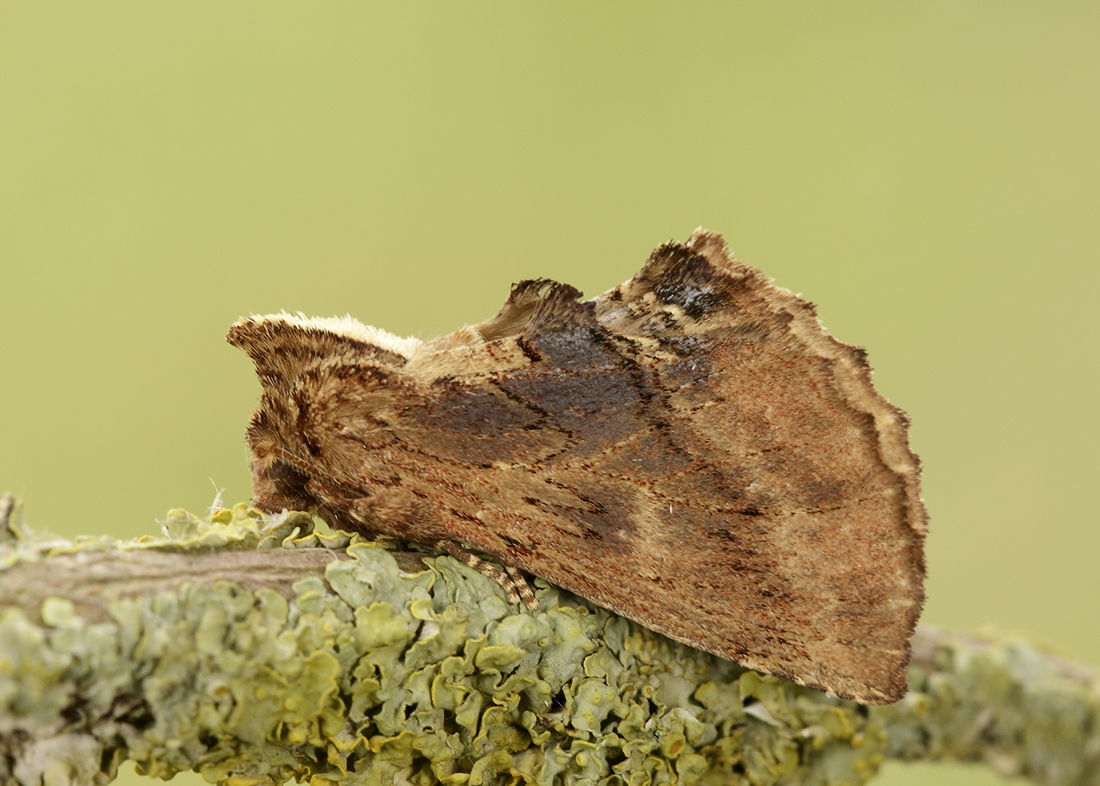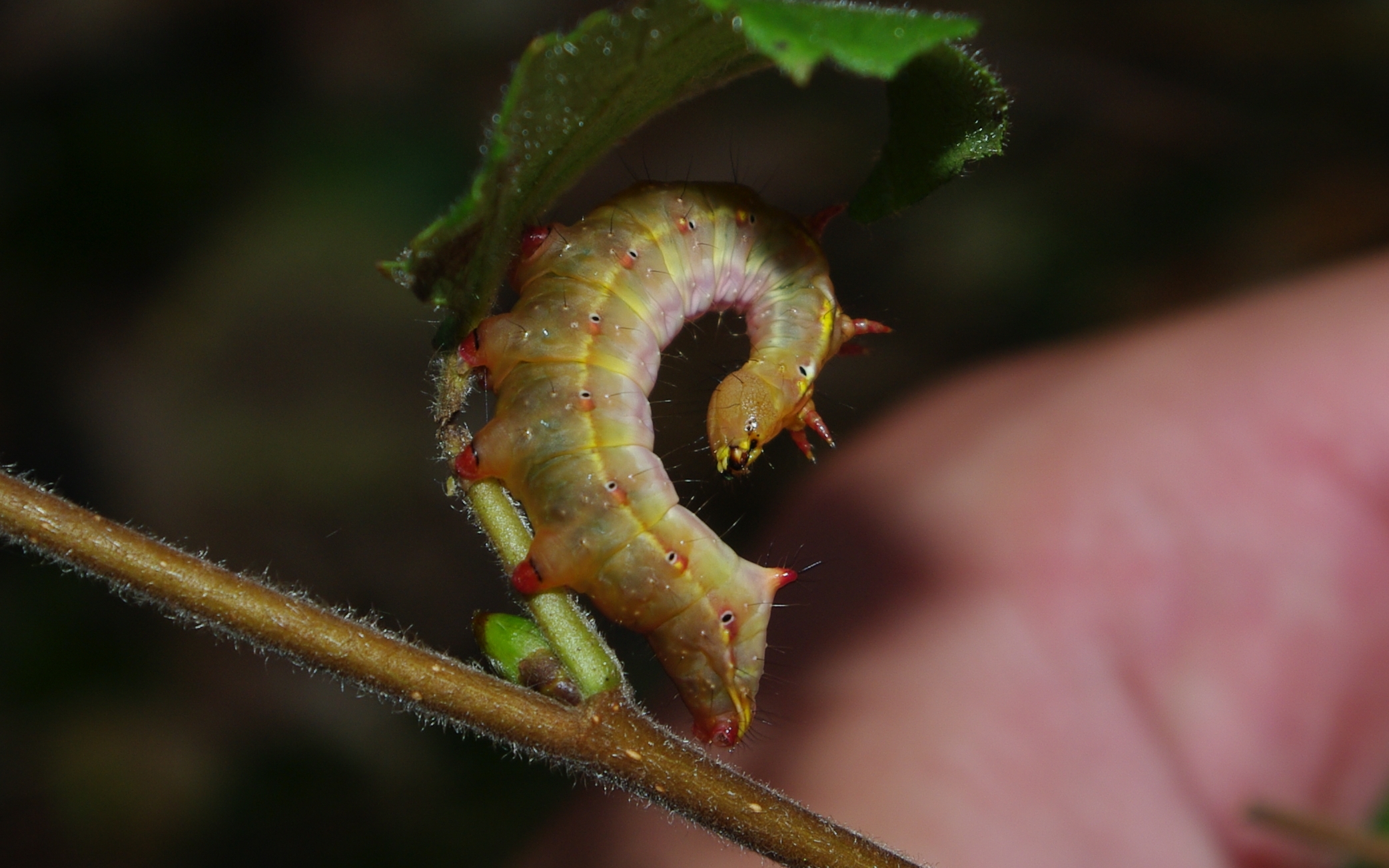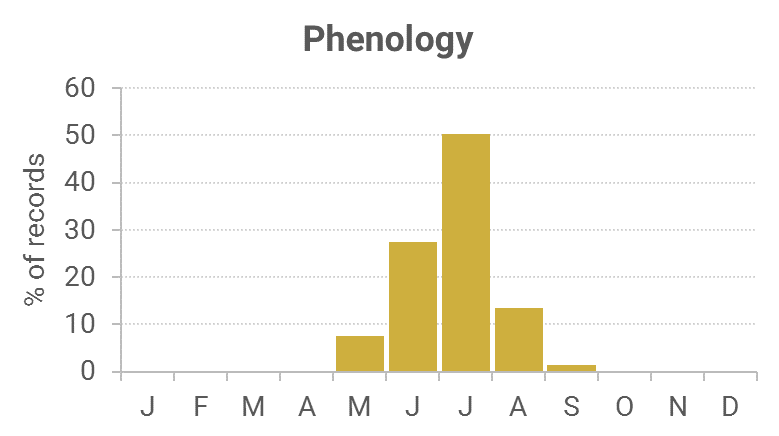Identification
The cream-coloured forward pointing tuft on the thorax and uniform warm brown forewings are diagnostic.
Life cycle
Probably two generations. Overwinters as a pupa in an underground cocoon. Larvae are present June to September.
Larval foodplants
Larvae feed on wide range of tree species.
Habitat
Woodland, scrub and other habitats with broadleaved trees.
History
Somerville (1858) had found the larvae on hazel whilst on a visit to the Moffat area in August of that year. Lennon (1863) stated that it was commonly distributed around Dumfries where he walked. Douglas Robinson (1870-71) had found one or two larvae in August on Almorness (VC73). Gordon (1913) found the larvae abundant on various trees in Wigtownshire, with the imago at light in June. Sir Arthur Duncan had found it at Closeburn and had also trapped it Lannhall, Tynron, using an MV light sometime during 1951.
During 1974-1993 there were about 250 records from six of the seven Rothamsted stations, Penninghame being the odd one out. From 1992 to 2010 regular trapping at Durisdeer and Kirkton (VC72), Carsfad near Dalry and Cally Woods (VC73) yielded about 240 records, and, with other records from widely scattered sites, proved it to be common in the two eastern VCs, but rarer in Wigtownshire with only eleven records during the same period.
Dark form f. nigra Riesen
The ground colour can range from pale yellowish-brown to a dark purple-brown, with the darkest of these being nigra.
Our first notice of a dark form was from Corsemalzie (VC74) in late June 1898. The next came from Kirkland (VC72) in 2010.











